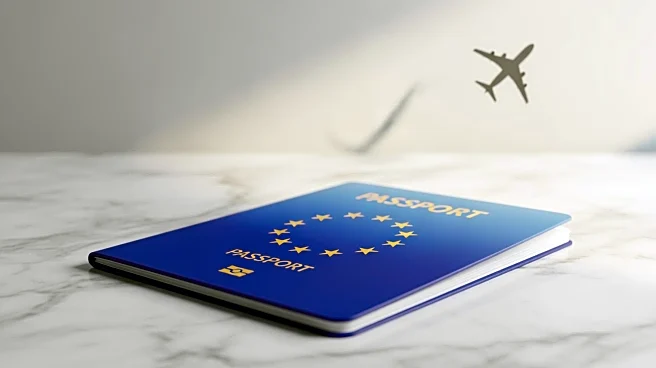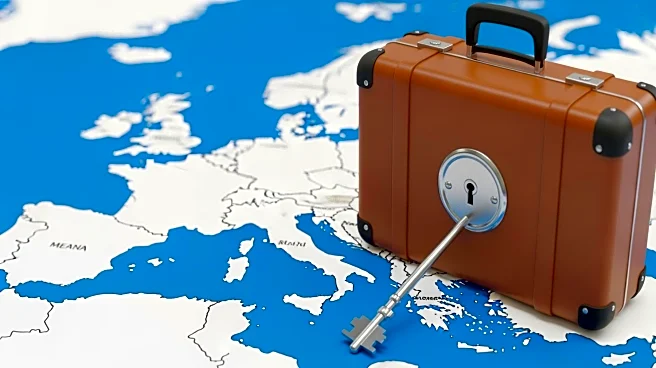What's Happening?
The European Union is set to launch its new Entry/Exit System (EES) on October 12, 2025, which will impact travelers from non-EU countries, including the UK. The EES is designed to streamline and automate border control processes for non-EU visitors entering
the Schengen Area. It will electronically register entry and exit data, replacing the manual passport stamping process. This system aims to enhance border security and ensure compliance with the 90-day short stay limit within a 180-day period. Despite initial concerns, the EES does not require UK travelers to have medical insurance, although comprehensive travel insurance is recommended. The system will not change visa requirements for short stays, and it is not a punitive measure against the UK for Brexit, as it applies to all non-EU travelers.
Why It's Important?
The implementation of the EES is significant as it represents a major shift in how border control is managed for non-EU travelers, including those from the UK. This system is expected to improve the efficiency and security of border crossings by automating data collection and reducing the need for manual checks. For UK travelers, this means adapting to new procedures when entering the EU, which could initially lead to longer wait times as both travelers and border staff adjust to the new system. However, in the long term, the EES is intended to facilitate smoother and faster border crossings. The system also underscores the EU's commitment to maintaining strict border controls post-Brexit, ensuring that travel rules are uniformly applied across all non-EU countries.
What's Next?
As the EES is rolled out, travelers and border officials will need to familiarize themselves with the new procedures. The EU plans to introduce self-service kiosks and pre-registration systems at some borders to expedite the process. Additionally, the European Travel Information and Authorisation System (ETIAS) will be introduced in 2026, requiring visa-exempt travelers, including UK nationals, to obtain pre-travel authorization. This will further streamline entry processes and enhance security. Travelers should stay informed about these changes and prepare for potential adjustments in travel plans, especially during the initial implementation phase.
Beyond the Headlines
The introduction of the EES raises important considerations regarding data privacy and security. The system will collect biometric data, such as facial scans and fingerprints, which will be governed by strict EU data protection regulations. This highlights the ongoing balance between enhancing security and protecting individual privacy. Additionally, the EES reflects broader trends in global travel, where technology is increasingly used to manage and secure borders. As such systems become more common, travelers worldwide may experience similar changes in border control processes.















